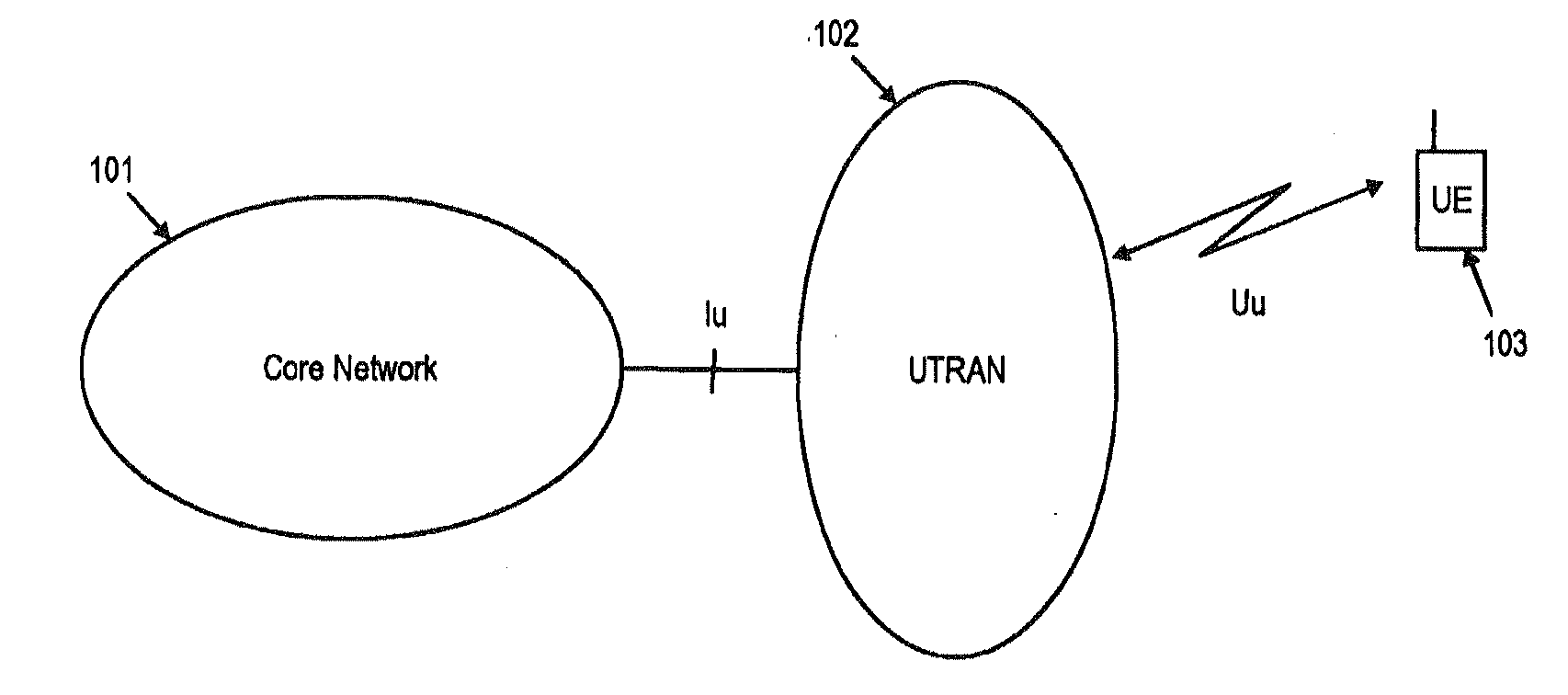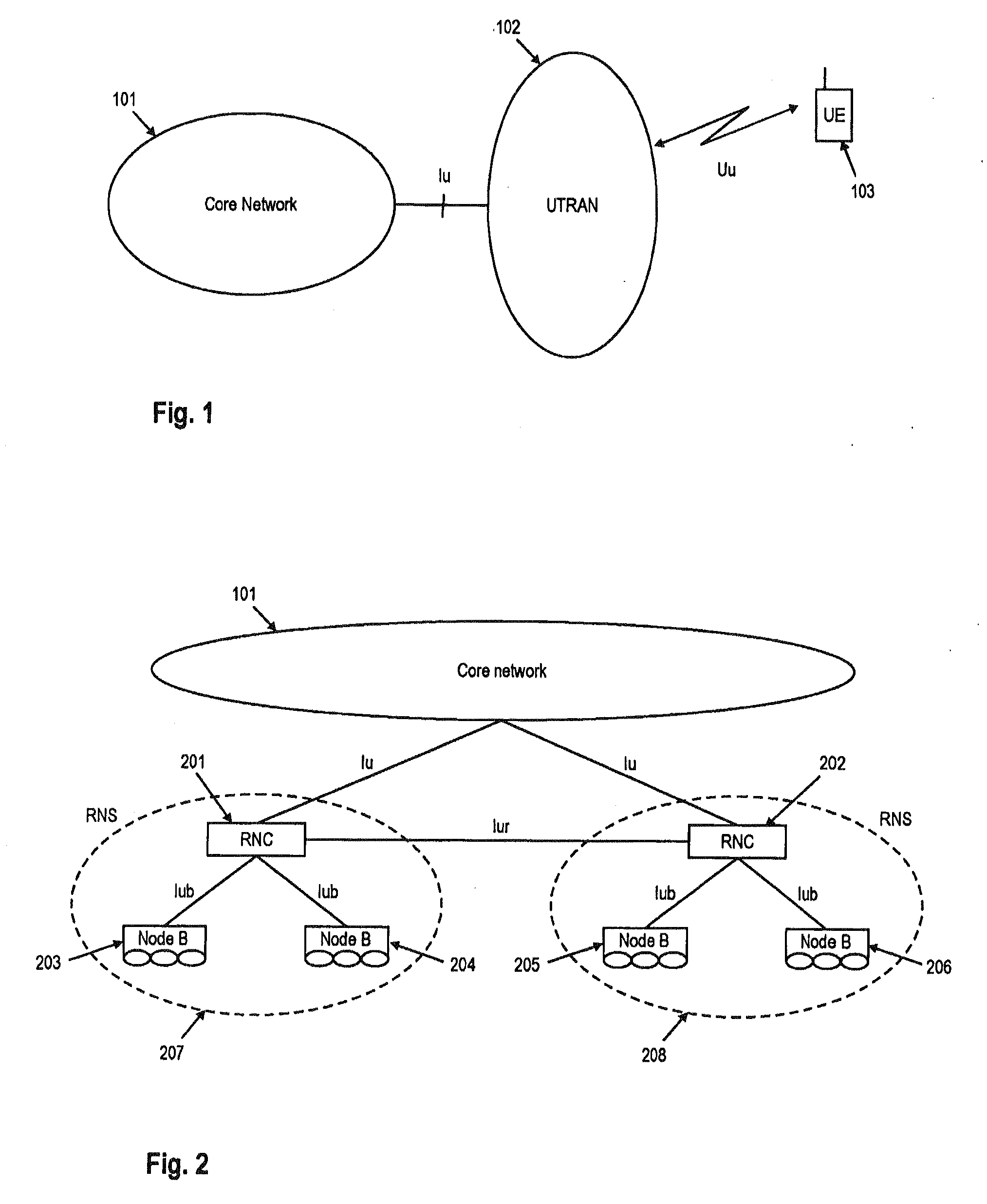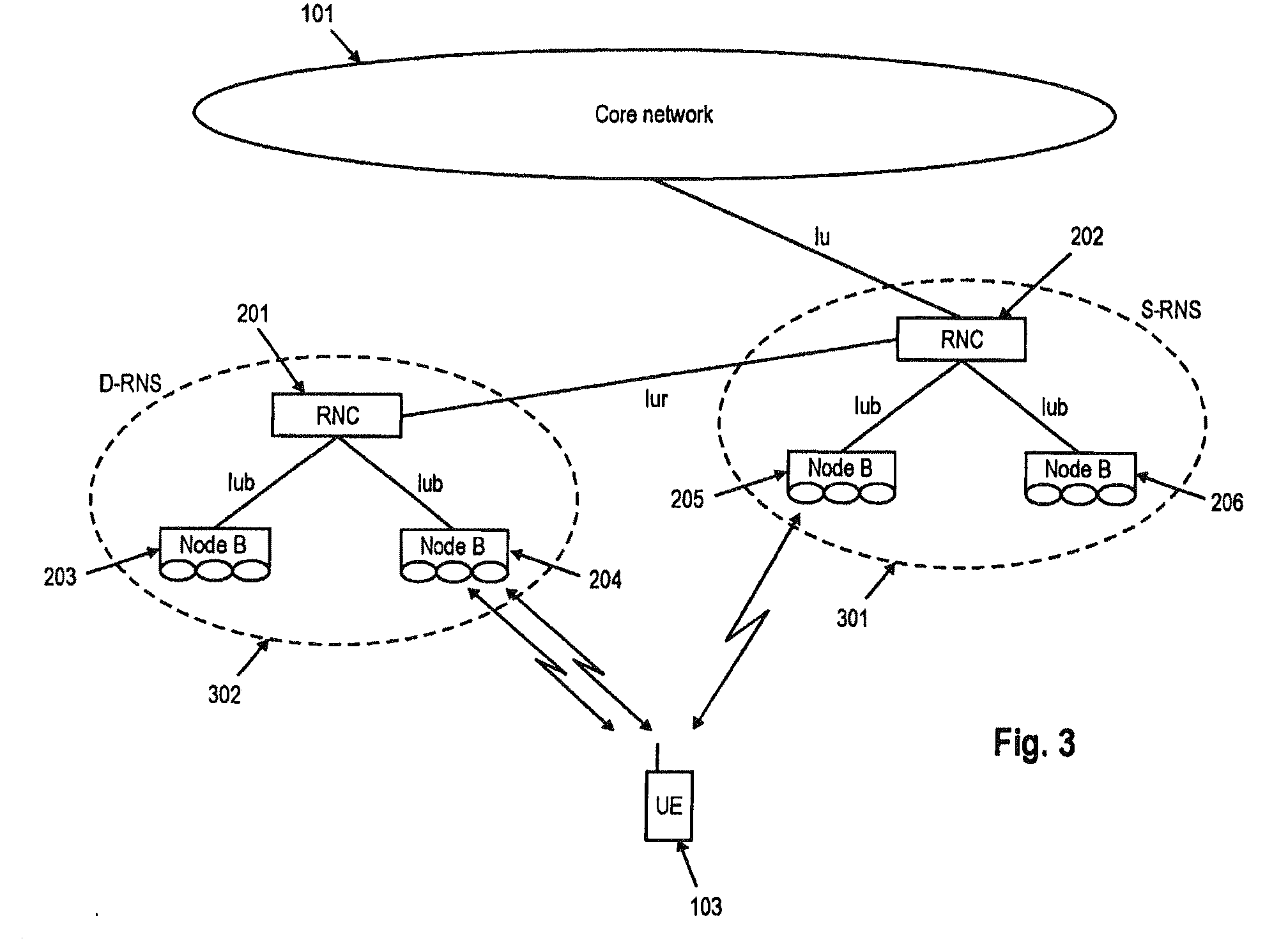Harq Protocol Optimization for Packet Data Transmission
a packet data and protocol optimization technology, applied in the field of harq methods, can solve the problems of increasing the cost of a hybrid arq soft-buffer at the receiver, reducing the overall latency of communications of user equipment, and theoretically not being able to correctly decode packets
- Summary
- Abstract
- Description
- Claims
- Application Information
AI Technical Summary
Benefits of technology
Problems solved by technology
Method used
Image
Examples
Embodiment Construction
[0122]The following paragraphs will describe various embodiments of the invention. For exemplary purposes only, most of the embodiments are outlined in relation to a UMTS communication system and the terminology used in the subsequent sections mainly relates to the UMTS terminology. However, the used terminology and the description of the embodiments with respect to a UMTS architecture is not intended to limit the principles and ideas of the inventions to such systems.
[0123]Also the detailed explanations given in the Technical Background section above are merely intended to better understand the mostly UMTS specific exemplary embodiments described in the following and should not be understood as limiting the invention to the described specific implementations of processes and functions in the mobile communication network.
[0124]The ideas and principles that will be outlined in the subsequent sections may be applicable to any HARQ protocol using incremental redundancy.
[0125]In the emb...
PUM
 Login to View More
Login to View More Abstract
Description
Claims
Application Information
 Login to View More
Login to View More - R&D
- Intellectual Property
- Life Sciences
- Materials
- Tech Scout
- Unparalleled Data Quality
- Higher Quality Content
- 60% Fewer Hallucinations
Browse by: Latest US Patents, China's latest patents, Technical Efficacy Thesaurus, Application Domain, Technology Topic, Popular Technical Reports.
© 2025 PatSnap. All rights reserved.Legal|Privacy policy|Modern Slavery Act Transparency Statement|Sitemap|About US| Contact US: help@patsnap.com



